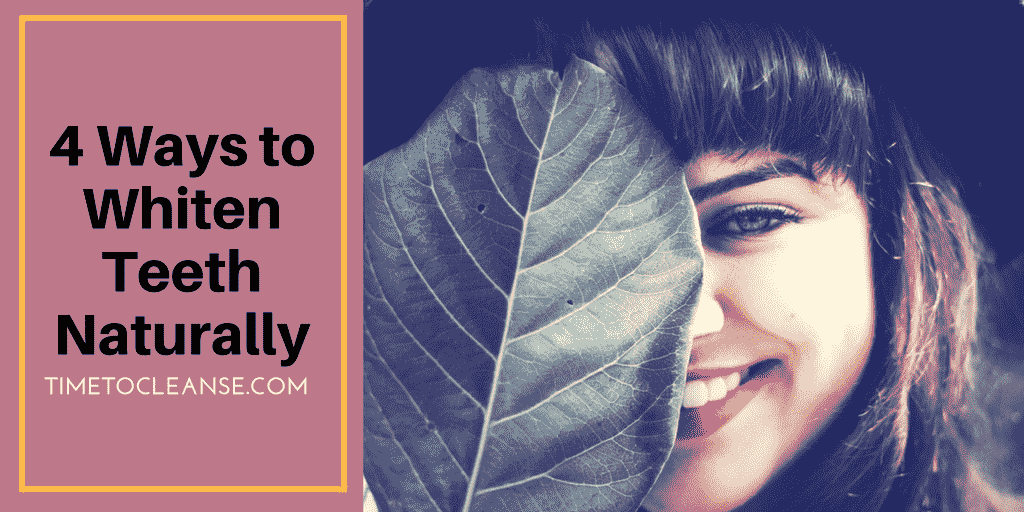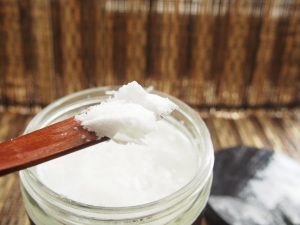
Big, bright smiles with gleaming white teeth are all the rage these days. Hollywood celebrities, magazine models, television personalities, all seem to have very white teeth. This seems to be something many of us strive for as we try and maintain eternal youth and beauty.
White teeth symbolize healthy teeth and gums and of course, this is something that we all wish to portray. When meeting someone and smiling at them, one of the first things we may notice is the condition of their teeth. We may be turned off to someone who has yellow stained teeth and wishes their teeth were gleaming white as well!
What Causes Teeth to Yellow?
According to dentists, most causes of yellowing teeth are from extrinsic (outside) stains and lifestyle choices. The outermost layers of your teeth are comprised of hard enamel and can easily be stained.
Quiz: Is Your Body TOXIC? Take the Test...
(get your free personalized report)
Culprits? Tobacco, coffee, tea, red wine and certain dark-colored fruits and vegetables. Add to this, acidic foods that may erode tooth enamel, and you have set your teeth up to yellowing.
Another factor in teeth yellowing is called intrinsic (internal) stains. Some of this type of yellowing can be inherited from your family genes. Dentinogenesis Imperfecta and Amelogenesis Imperfecta are two genetic defects that cause the teeth to develop improperly and could lead to discoloration. Certain antibiotics taken as children can lead to tooth discoloration as well, such as tetracycline and doxycycline.
“The No. 1 cause of teeth yellowing is lifestyle,” said Dr. Justin Philipp of J. Philipp Dentistry in Chandler, Arizona. “Smoking, drinking coffees and teas, chewing tobacco are the worst.”
But at What Cost do Those Glowing White Teeth Come at?
According to the National Library of Medicine, the main ingredient used in tooth whitening gels is a chemical called carbide peroxide. Keep in mind that this ingredient is also used in the removal of ear wax!
A major disadvantage of using this powerful chemical is that increased levels may lead to excess sensitivity and roughness of the surface of the tooth. Using this type of whitening treatment can play havoc on your hard dental tissues by actually decreasing the mineral content of the protective enamel. This can result in susceptibility of tiny fractures in the enamel which can lead to tooth sensitivity as well as allowing access for bacteria, which can lead to gum infections.
And what exactly is carbide peroxide? It is a type of hydrogen peroxide that is a strong oxidizing agent. Hydrogen peroxide releases free radicals, that can disrupt cellar growth leading to potential diseases.
Quiz: Is Your Body TOXIC? Take the Test...
(personalized report)
Another chemical added to tooth whitening gels is fluoride. Fluoride is added as it may help in rebuilding the minerals that the peroxide have dissolved. Fluoride is generously used in commercial toothpaste and is considered a highly toxic substance. According to the National Research Council, the alleged safe limits of fluoride that can be added to water (4mg/l) is actually toxic to human health!
As fluoride is already added to most municipal drinking water supplies, adding fluoride to toothpaste and whitening gels is adding more toxicity to the body.
What Alternatives Do I Have to Naturally Whiten My Teeth?
Fortunately, there are several alternatives to whiten your teeth other than adding toxic chemicals to your mouth.
Baking Soda
Let’s start with this old remedy, tried and true for many generations. Baking soda is currently found in many kinds of toothpaste already, so it is already an effective tooth cleaner. Daily use of baking soda for teeth whitening can also be effective if used properly. Baking soda can be abrasive if used straight, so make sure that you mix a bit of water with the baking soda before you brush and rinse thoroughly.
Coconut Oil Pulling
 Oil pulling for dental health has been used for centuries and is considered to be an optimal way to clean teeth in Ayurvedic medicine. Coconut oil pulling is not for everyone, however, if you are up to the process, you may find that your teeth become quite clean, whiter and free from bacteria. The coconut oil, when swished through the mouth, actually can cut through plaque and help remove toxins that can create cavities and gum disease.
Oil pulling for dental health has been used for centuries and is considered to be an optimal way to clean teeth in Ayurvedic medicine. Coconut oil pulling is not for everyone, however, if you are up to the process, you may find that your teeth become quite clean, whiter and free from bacteria. The coconut oil, when swished through the mouth, actually can cut through plaque and help remove toxins that can create cavities and gum disease.
How to oil pull? Simply take a couple of teaspoons of coconut oil and swish in your mouth for 20 minutes. I know this sounds like a long time, however, many folks really believe in the benefits of oil pulling, so give it a try as an alternative to chemical teeth whitening.
Activated Charcoal
Again, this may not be for everybody but can be effective for teeth whitening. Keep in mind, when using activated charcoal, please purchase pure grade activated charcoal powder. This can be a messy way of brushing your teeth, so make sure to prepare your sink beforehand and get ready to rinse the charcoal away. Do not swallow the charcoal.
How to brush with activated charcoal? Simply pour the charcoal onto a wet toothbrush and scrub away! Try and brush for 2-3 minutes for the optimum effect.
Apple Cider Vinegar
Apple cider vinegar contains natural antibiotic properties and therefore, can be effective in overall dental health. Due to the acidic nature of apple cider vinegar, it helps to break down the plaque that may be built on your teeth and help to remove toxins. The pH of apple cider vinegar can help to remove stains as well and be effective as a natural tooth whitener.
To use, simply swish apple cider vinegar throughout your mouth for about 2 minutes and rinse thoroughly.
Being conscious of not drinking too much coffee, tea, red wine should help in preventing excessive yellowing of the teeth naturally. And certainly eliminating smoking should lead to a brighter smile.
Brush your teeth 2-3 times daily, especially after eating or drinking a dark staining beverage, make sure and floss 2 times daily and you should be on the road to quality dental health and brighter, whiter teeth.
